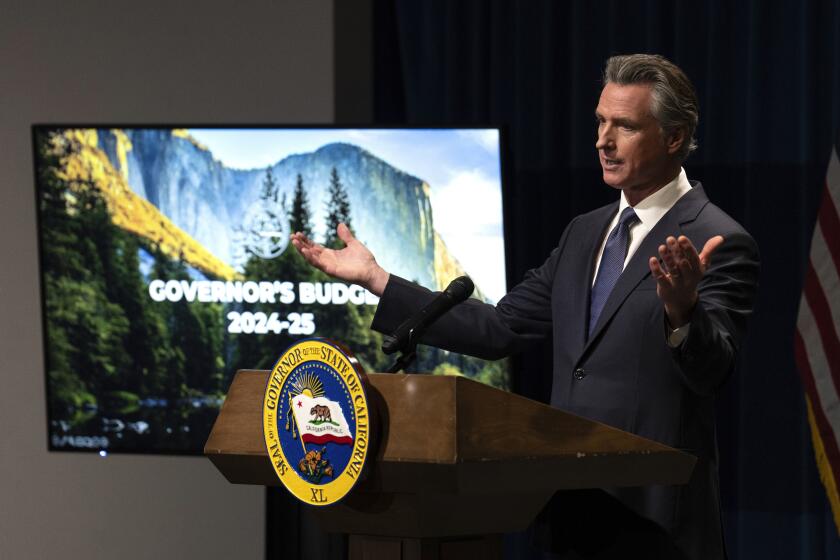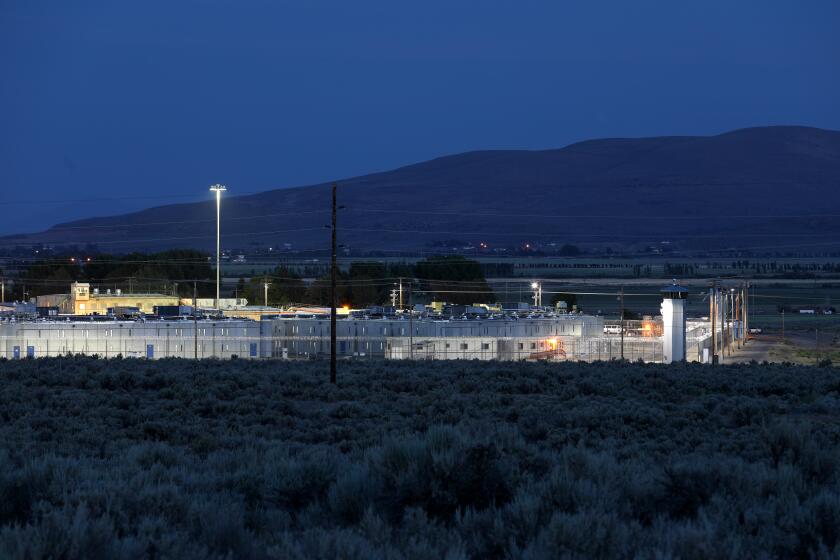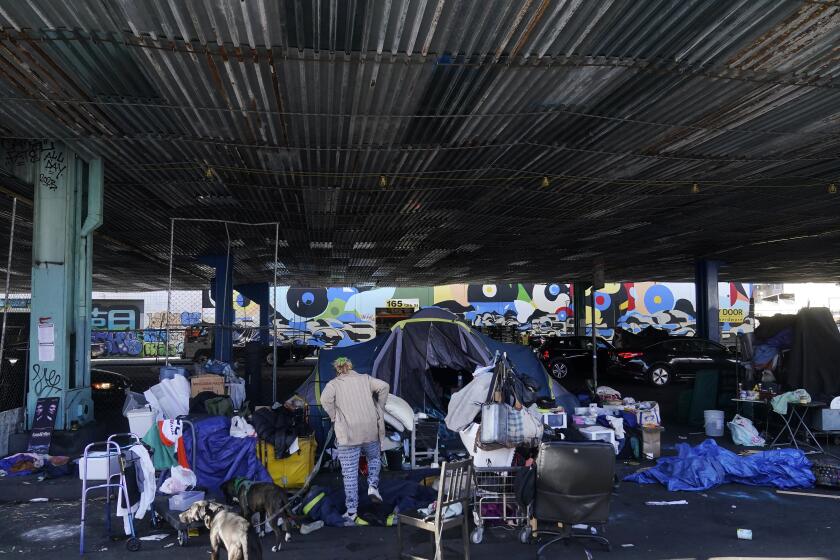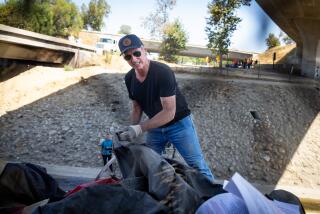Public defenders, foster kids, climate: Programs created during California’s boom may stall amid deficit
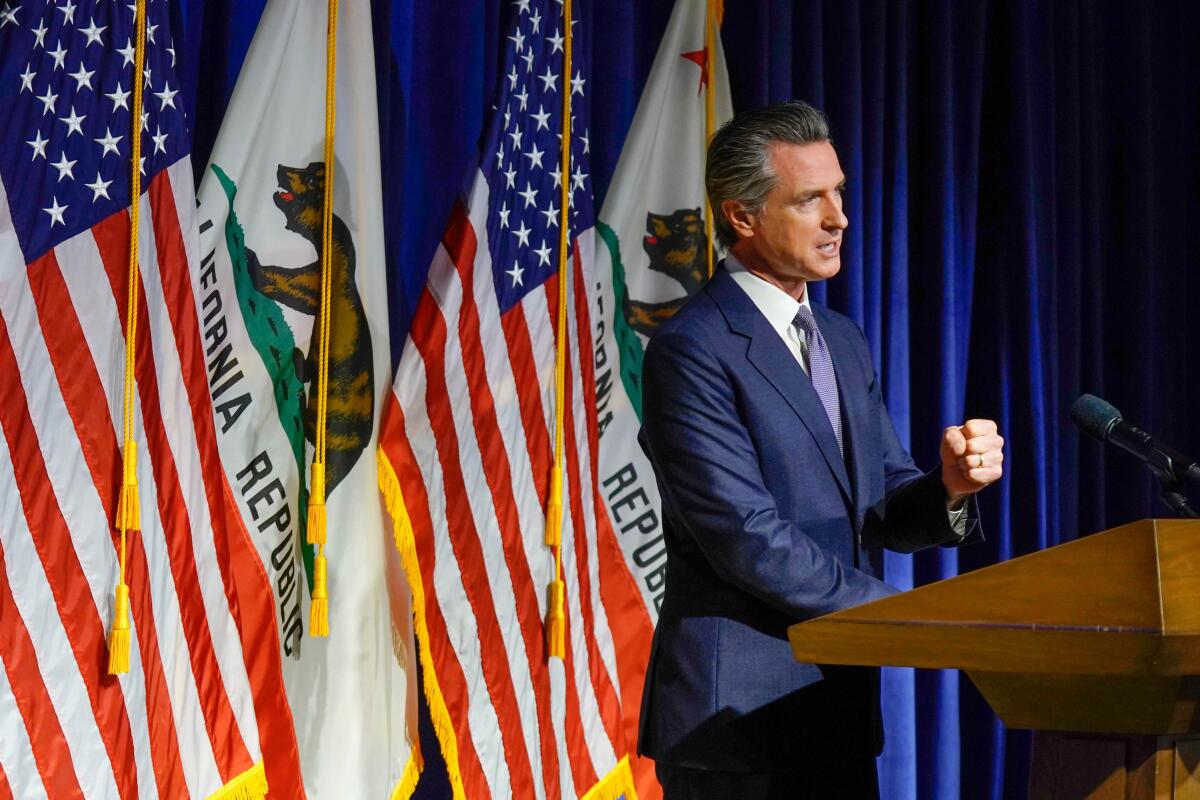
SACRAMENTO — Just a few years ago, California’s budget was overflowing with a record high surplus, spurring the creation of a slew of programs reflecting the state’s liberal ideals.
Democrats who control the state Capitol funded pilots to test new ways to support foster youth, help oil workers transition to cleaner industries and prevent more Californians from becoming homeless — just some of the ambitious ideas that became reality when the budget was flush.
Now, as the state faces an enormous budget deficit that the nonpartisan Legislative Analyst’s Office predicted in February could be as much as $73 billion, some of those programs could come to a screeching halt.
Gov. Gavin Newsom and Democratic lawmakers are considering significant cuts to some of the very initiatives they recently helped launch while promising to “protect our progress.”
It’s both a reflection of California’s wild budget fluctuations and what can happen in a one-party state known as a progressive policy trailblazer when financial times are good.
For Republicans, it’s an “I told you so” moment.
With weaker revenues than expected, Gov. Gavin Newsom wants to declare a budget emergency and ask California lawmakers to dip into the state’s reserves.
“The surpluses were absolutely abnormal. They should have put much more money into the budgetary reserve than they did,” said Sen. Roger Niello (R-Fair Oaks), vice chair of the Senate Budget Committee.
Newsom’s budget last year included record reserves of nearly $38 billion, but for those in the minority party like Niello, more could have been put away in lieu of creating costly new programs.
“Let’s not get too crazy with these huge revenues,” is the approach Democrats should have taken, Niello said.
Organizations such as the California Budget Policy Center, which advocates for low-income residents and policies that curb inequities, argue there’s nothing wrong with trying out new ideas when the money is there.
“The state needs these opportunities to experiment and practice innovation because you can improve the efficiency and effectiveness during those periods of time,” said Chris Hoene, executive director of the center. “The deficit is forcing them to pull back on a significant share of programs but ... if there are better revenue periods ahead, they have said they will continue to make those investments.”
Reducing or altogether eliminating newer programs that are still being tested is better than cutting long established programs that Californians rely on, said H.D. Palmer, a spokesperson for Newsom’s Department of Finance.
“These clearly are proposals that wouldn’t be put forward were [it] not for the fact that we’ve got a substantial shortfall,” Palmer said. “It is understandable that people would have objections to these proposals. The question then becomes: What alternatives would people want to put forward, if you choose not to do these measures, that would provide us a like amount of savings to close the shortfall?”
Sen. Dave Min (D-Irvine) put it more bluntly during a legislative budget meeting held at the Capitol last week: “I’ll just be honest, this sucks.”
Newsom signed into law this week a budget agreement made with lawmakers that reduces the deficit by $17 billion, though it’s only a first step toward closing the yawning gap in the state’s spending plan.
As negotiations continue leading up to the June 15 deadline for lawmakers to pass a budget, here are some of the pilot programs Newsom has suggested scaling back or eliminating:
Support for public defenders and eligible prisoners
Prisoners who can’t afford to pay private attorneys and are eligible to have their sentences shortened could potentially stay behind bars longer due to one proposed funding reduction.
In 2021, a public defense pilot program was created to help attorneys cope with a backlog of cases involving prisoners eligible for earlier release under the state’s latest progressive resentencing laws.
Under the program, county public defender offices have received $100 million, collectively helping free more than 8,000 people in the program’s first six months, according to the California Board of State and Community Corrections. Many of those beneficiaries were charged with murder because of their involvement in a felony that led to a death, even if they were not the actual killer — a remnant of a law that California overturned in 2019.
The program now faces a $40-million reduction — a move proponents say could render some of California’s resentencing laws useless because understaffed and overburdened offices won’t be able to adequately assist those eligible.
A representative for Newsom said the funding given so far “still provides data for the evaluation of the results” of the program. But Ricardo Garcia, public defender for Los Angeles County, says it will hamper the state’s efforts to “right some of the mistakes of the past.”
In Los Angeles County, the program has led to the release of more than 100 prisoners, representing 685 fewer years of total potential incarceration, according to Garcia. The program has allowed Garcia’s office to hire more public defenders, social workers and support staff as they represent more than 800 eligible clients who await resentencing.
“Having all these statutes in place ... isn’t very helpful if we don’t have the resources to implement it and to really make them effective,” Garcia said.
Gavin Newsom could save the state $1 billion annually by closing five more prisons, analysts say. The governor finds himself in a precarious political spot.
Help for struggling foster kids
Since 2019, thousands of foster kids — and some of their caretakers — have been able to call a 24/7 hotline for help with everyday conflicts and receive expert support.
The urgent response system was prompted by concerns about “placement disruptions” that can lead to instability and possibly homelessness for the already vulnerable youths.
The hotline annually serves about 5,000 foster children and caregivers, according to state data.
Child welfare advocates are calling on the governor and lawmakers to reconsider a $30-million proposed reduction — a cut they say will shutter the program entirely.
Foster placement changes in California decreased by 16% since the launch of the hotline, according to the data, and advocates say that’s no coincidence.
“We’re certain cutting it will lead to serious negative outcomes for foster children, including increased hospitalization and criminalization,” Ted Lempert, president of Children Now, said.
Court-ordered parenting classes are key in child abuse and neglect cases but go largely unregulated in California, a Times investigation has found.
Funding for low-income housing
In 2023 alone, more than 100,000 Californians had to move because the owners of their homes fell behind on their bills, according to the Community Landtrust Network.
The foreclosure intervention housing preservation program was launched as a way to prevent displacement of renters. It offers grants to residents and nonprofits so they can buy properties at risk of foreclosure and keep them available as homes for people with low incomes.
Proponents of the program called it an “unprecedented” solution to the state’s homelessness crisis because it allows at-risk renters to stay where they are instead of potentially being forced onto the streets or into shelters.
Newsom proposed cutting $248 million meant for the program over three years — about half its total budget. Advocates are urging him to change his mind, as the funding has not even yet been disbursed.
“The need for the program is too great and both [the California Department of Housing & Community Development] and other key stakeholders have sunk too many resources into this pioneering housing strategy to hobble it now,” the Community Landtrust Network said in a statement.
The California State Auditor’s Office analyzed homelessness spending at the behest of lawmakers concerned about efficacy.
A slew of climate friendly programs
Low-income Californians at the highest risk of wildfires destroying their homes, and oil and gas workers at risk of losing their jobs, are among those who could feel the brunt of climate programs now on the chopping block.
Funding reductions are proposed for a home hardening initiative, a program that helps workers find new jobs as the state moves away from fossil fuels, and a program that promotes composting in local governments.
The proposed reductions have environmental activists concerned, even as the budget draft maintains billions in investments to curb climate change and California is considered an international leader on the issue.
“The state needs to accelerate its efforts to prepare, not pull back — especially in vulnerable and underresourced communities,” Zack Cefalu, a legislative affairs analyst for the League of California Cities, said.
More to Read
Sign up for Essential California
The most important California stories and recommendations in your inbox every morning.
You may occasionally receive promotional content from the Los Angeles Times.
